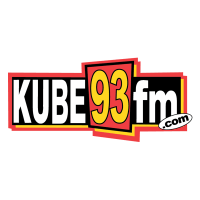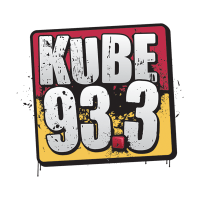
As a rookie radio journalist in the mid-’80s, I wrote an article for Radio & Records about markets where I felt the Urban format could flourish on FM. One of them was Seattle, and that prompted a quizzical call from a radio-station general manager in that market. Surely, I understood that there was a minimal African-American population, he said. I can’t remember whether it was the same call, but it was also around then that a radio person told me that even Whitney Houston’s hits wouldn’t work in Seattle.
Why did I think Urban would work, asked the GM? At that moment, all that backed me up was the explosive success of KPWR (Power 106) Los Angeles, and perhaps the surprising success of Rhythmic CHR on KSFM (FM102) Sacramento. KMEL San Francisco had the industry buzz, but that market had a history of R&B radio. Sacramento was the next step in R&B, then Hip-Hop, becoming the hit music of California and the Southwest — sometimes in places with an R&B radio history (San Diego), but also in new markets like Albuquerque, El Paso, Oxnard/Ventura.
Finally, in fall 1991, as Mainstream Top 40 began to falter, KUBE Seattle became “KUBE 93 Jams.” Six months later, Seattle’s Sir Mix-A-Lot’s was No. 1 with “Baby Got Back.” A few months later, I was in Seattle for an industry convention. KUBE had left KPLZ alone in the Mainstream Top 40 franchise, but it didn’t matter: R&B and Hip-Hop had become the pop music of Seattle as well. KPLZ would briefly lean more rhythmic itself, then it would give up and go Hot AC outright a few years later.
KUBE’s influence was felt throughout the region. From Spokane to Boise, R&B and Hip-Hop became he pop music of many smaller Pacific Northwest markets as well. That meant Rhythmic Top 40 was the default setting for everywhere between Seattle and Houston. Even more than KMEL or the mid-’90s success of WQHT (Hot 97) New York, KUBE’s success was the most compelling argument that Hip-Hop and R&B hadn’t infiltrated pop music, but superseded it. And at least three years passed in CHR before there was much evidence to the contrary.
KUBE briefly tried segueing back to an MTV-like version of Top 40 in 1994 that combined Hip-Hop and Alternative, a format tried in several places, but which took hold nowhere. A few months later, KUBE was back to Rhythmic Top 40. In the spring of 1997, just before Mainstream Top 40 proved that pop music had not been entirely usurped, it peaked at a 7.1 share, its highest as a Rhythmic Top 40.
I could have written about KUBE’s impact in 2016, when the call letters and Hip-Hop format were moved to a rimshot frequency — the same one that had briefly tried to do Urban to KUBE’s Rhythmic Top 40 in the mid-‘90s. KUBE returned to 93.3 FM in 2018, as streaming showed Hip-Hop’s resurgence and briefly rekindled the “it’s the new rock and roll” discussion. On February 19, the station began stunting, this time sending the format to HD-2. In the just-released January ’22 PPM ratings, KUBE was up 1.4-1.7 in its final full month.
There aren’t a lot of strongholds for younger-leaning Hip-Hop/R&B radio overall right now. It was one of the first formats to show the impact of streaming — not just Spotify but Soundcloud. But other Western markets have seen a similar trajectory. KQKS (KS107.5) Denver was up 1.5-1.7. KKFR Phoenix was up 2.0-2.6. Parents recognize Hip-Hop as again being common currency among teenagers, but ratings don’t yet offer much evidence.
The station that most attests to KUBE’s legacy is rival KHTP (Hot 103.7), doing some form of Hip-Hop and R&B throwbacks since 2013. (For a while, it had Sir Mix-A-Lot as morning host as well.) At the end, KUBE was trying to draw on its heritage as well — billing itself as “No. 1 for Hip-Hop and the Best Throwbacks.” In the Final Listen I took on KUBE’s last day, the 75-minute stretch I heard was about 50% throwbacks, punctuated by three songs apiece from Drake and Doja Cat. Not even much of the Megan Thee Stallion/Saweetie/Latto female rap that has given Hip-Hop new crossover energy was there at the end.
There was ample evidence of Hip-Hop’s mid-’90s/early ’00s reach after this year’s Super Bowl halftime show. I’ve seen plenty of annoyed comments from radio people by now, mostly from those at least a generation older. But the reaction in my Twitter feed was 80% positive, and it was from radio programmers and air talent in every format. During its last week, KUBE drew heavily on that show’s performers. Dr. Dre’s “Forgot About Dre” and Eminem’s “Lose Yourself” both played about 30 times.
I’m finishing this article in Nashville in between sessions of Country Radio Seminar 2022. On the radio landscape, all formats, including seemingly unlikely ones, are linked, but the connection between Classic Hip-Hop and Country is more than chaos theory. The debate about Country’s Hip-Hop flavor stirs anew, as if it never happened, whenever there’s a “Fancy Like” or any phenomenal hit that invokes Hip-Hop even faintly.
 In the past few years, Country has found itself in roughly the same place with Hip-Hop-influenced music as Mainstream CHR was with Hip-Hop crossovers when KUBE changed in 1991. Detractors felt Top 40 had gone overboard on Hip-Hop and R&B crossovers, but CHR felt sapped without them. The music derided as “Bro Country” eventually gave way to the music derided as “Boyfriend Country.” When it did, programmers and listeners both felt the energy missing. But in the early ’90s, when both KUBE and Country radio surged, tempo and energy were drivers for them both.
In the past few years, Country has found itself in roughly the same place with Hip-Hop-influenced music as Mainstream CHR was with Hip-Hop crossovers when KUBE changed in 1991. Detractors felt Top 40 had gone overboard on Hip-Hop and R&B crossovers, but CHR felt sapped without them. The music derided as “Bro Country” eventually gave way to the music derided as “Boyfriend Country.” When it did, programmers and listeners both felt the energy missing. But in the early ’90s, when both KUBE and Country radio surged, tempo and energy were drivers for them both.
Here’s KUBE on its final day, February 18, just before 2 p.m.
- Drake, “Take Care”
- Doja Cat f/Gucci Mane, “Like That”
- Montell Jordan, “This Is How We Do It”
- T-Pain f/Akon, “Bartender”
- Drake f/Lil Durk, “Laugh Now Cry Later”
- 112, “Peaches and Cream”
- Chingy, “Right Thurr”
- Lil Nas X, “Montero (Call Me by Your Name)”
- DMX, “Party Up (Up in Here)”
- Doja Cat f/Sza, “Kiss Me More”
- Fugees, “Killing Me Softly”
- Drake, “Nice for What”
- Ja Rule f/Ashanti, “Mesmerize”
- Jack Harlow, “What’s Poppin’”
